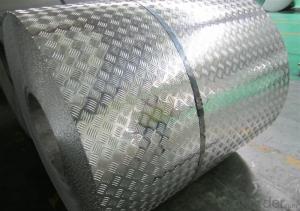Mill Finish Five Bar Aluminium Tread Plates 5052 HO for Boat
- Loading Port:
- Shanghai
- Payment Terms:
- TT OR LC
- Min Order Qty:
- 5 m.t.
- Supply Capability:
- 1000 m.t./month
OKorder Service Pledge
OKorder Financial Service
You Might Also Like
Item specifice
Mill Finish Five Bar Aluminium Tread Plates 5052 HO for Boat
1.Structure of Mill Finish Five Bar Aluminium Tread Plates 5052 HO for Boat
Aluminum Sheets are strengthened and cut from raw materials with different alloys, such as AA5005, AA5052, etc. They are easy for processing in different shapes, good in intensity and can be quickly installed. Aluminium Sheets for Energy Saving Curtain Walls are good in energy saving, weather resistance, fire resistance, easy for maintenance and with many colors.
Aluminium Sheets for Energy Saving Curtain Walls are widely used in construction of metal walls, metal ceilings, car decoration, advertizing panels, etc.
2.Main Features of Mill Finish Five Bar Aluminium Tread Plates 5052 HO for Boat
•High intensity
•Easy to be processed and shaped
•Weather resistance
•Anti-pollution & environment protection
3. Mill Finish Five Bar Aluminium Tread Plates 5052 HO for Boat Images
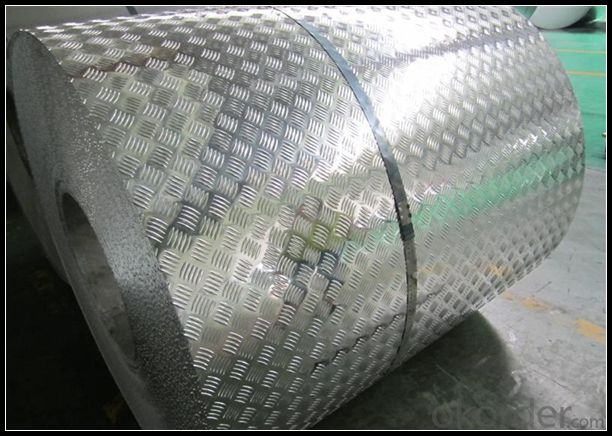
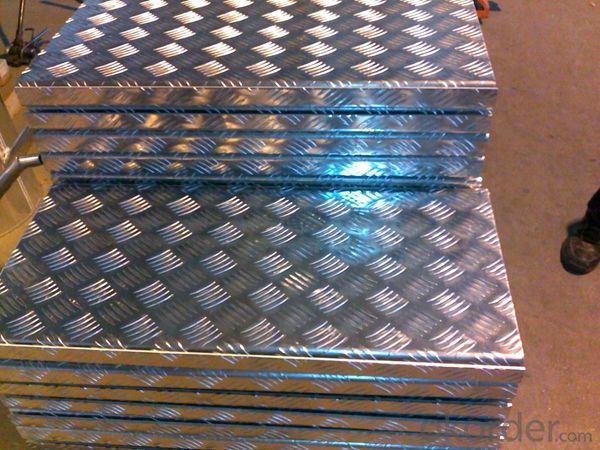
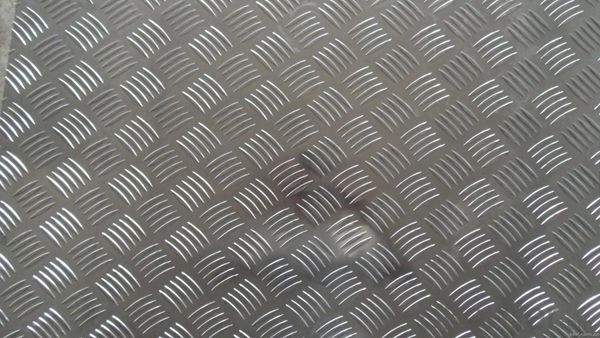
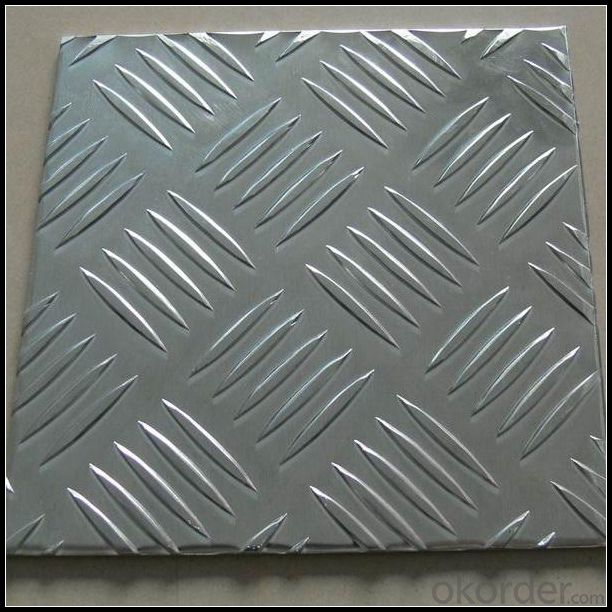
4.Specification of Mill Finish Five Bar Aluminium Tread Plates 5052 HO for Boat
Alloy Number | AA5XXX |
Temper | H12, H14, H16, H18, H22, H24, H26, H32, HO, F |
Thickness | 0.1mm – 500mm |
Width | 10mm- 2200mm |
Standard | GB/T3880-2006, ASTM, ISO, EU standard |
5.FAQ of Mill Finish Five Bar Aluminium Tread Plates 5052 HO for Boat
A.What about inspections to guarantee quality?
For each order for Aluminum Sheets with Mill Finished Surface AA5XXX, we will arrange strict inspection for raw materials, inspection during production and inspection for finished goods.
With requirement of customers, we also can arrange the third party inspection.
B.What about delivery?
We will put order for Aluminum Sheets with Mill Finished Surface AA5XXX in production schedule after order gets confirmed against copy of TT or L/C. Normally it takes about one month for production. Exact shipment schedule is different based on different sizes and quantity.
C.What is the MOQ?
5 tons for each size.
D. Where have you exported aluminium sheets?
We have exported aluminum sheets to many countries. Main markets include South East Asia, Middle East, North America, South America, etc.
- Q:What are the different alloy compositions available for aluminum sheets?
- Aluminum sheets offer a variety of alloy compositions, each with its own distinct properties and applications. There are several common alloy compositions to consider. Firstly, we have 1100, which stands out for its exceptional corrosion resistance and high thermal conductivity. This alloy finds its place in chemical equipment, heat exchangers, and food processing equipment. Next, 3003 presents good formability, moderate strength, and excellent corrosion resistance. It is commonly employed in packaging, tanks, and architectural applications. Moving on to 5052, this alloy boasts high strength and good formability. It is often utilized in marine applications, as well as in aircraft and automotive parts. For those seeking excellent strength, good formability, and high corrosion resistance, 6061 is the alloy of choice. It is commonly found in structural applications like bridges, buildings, and transportation equipment. Lastly, we have 7075, known for its remarkably high strength and good machinability. Aerospace applications, as well as high-stress parts in the automotive and sporting goods industries, benefit from this alloy. These examples merely scratch the surface of the numerous alloy compositions available for aluminum sheets. The selection of the appropriate alloy hinges on specific application requirements, such as strength, corrosion resistance, formability, and machinability.
- Q:How much is one ton of aluminium plate?
- For aluminum alloy, the aluminum alloy and other metal elements, according to different metallic elements, can be divided into eight branches, 1-8 etc.. According to the contents of various metallic elements, each department can be divided into different grades of alloy, such as 8011505230031060, each kind of alloy prices are not the same. In addition, the different processing thickness, width, the process used, the cost is not the same, so the specifications are different, the price is different. As for the aluminum plate, how much is it a ton? I think you have a better answer.
- Q:How do aluminum sheets perform in terms of thermal expansion and contraction?
- Aluminum sheets have a relatively high coefficient of thermal expansion, meaning they expand more than other materials when heated and contract more when cooled.
- Q:How does the surface finish of aluminum sheet affect its cleaning requirements?
- The surface finish of aluminum sheet can greatly impact its cleaning requirements. A smooth and polished surface finish tends to be more resistant to dirt, stains, and corrosion, making it easier to clean. On the other hand, a textured or rough surface finish can trap dirt and debris, requiring more effort and specialized cleaning techniques to remove them effectively. Additionally, specific surface finishes may be more prone to scratching or damage during cleaning, necessitating a more gentle approach. Overall, the surface finish of aluminum sheet directly influences the cleaning method and effort needed to maintain its appearance and functionality.
- Q:Can the aluminum sheets be used for manufacturing aircraft landing gears?
- Yes, aluminum sheets can be used for manufacturing aircraft landing gears. Aluminum is a commonly used material in the aerospace industry due to its favorable properties, such as lightweight yet strong structure, high corrosion resistance, and good fatigue behavior. These qualities make aluminum sheets suitable for manufacturing various components of an aircraft, including landing gears. The use of aluminum in landing gears helps reduce the overall weight of the aircraft, which is crucial for fuel efficiency and performance. Additionally, aluminum can be easily formed, welded, and machined, allowing for the production of complex shapes and designs required for landing gears.
- Q:Can aluminum sheets be used for architectural applications?
- Yes, aluminum sheets can definitely be used for architectural applications. Aluminum is a versatile and lightweight material that offers numerous advantages for architectural projects. Its durability, corrosion resistance, and ability to withstand extreme weather conditions make it ideal for various architectural applications such as roofing, cladding, facades, windows, doors, and decorative elements. Aluminum sheets are available in a wide range of thicknesses, finishes, and colors, allowing architects and designers to achieve their desired aesthetic while maintaining structural integrity. The material can be easily shaped, bent, and formed into complex designs, providing flexibility and creative freedom to architects. In addition to its aesthetic appeal, aluminum is also a sustainable choice for architectural applications. It is a highly recyclable material, with a high recycling rate, making it an environmentally friendly option. Using aluminum sheets in architectural projects can contribute to reducing the carbon footprint and promoting sustainable design practices. Furthermore, aluminum sheets offer excellent thermal and acoustic properties, contributing to energy efficiency and sound insulation in buildings. The material can help reduce energy consumption and enhance occupant comfort, making it an attractive choice for architects and building owners. Overall, aluminum sheets are a popular choice in architectural applications due to their versatility, durability, sustainability, and aesthetic appeal. They offer numerous benefits and can be used in various ways to create stunning architectural designs while ensuring long-lasting performance.
- Q:What are the different types of alloys used for painted aluminum sheets?
- There are various types of alloys used for painted aluminum sheets, including the commonly used 3003 and 5052 alloys. These alloys offer excellent corrosion resistance and formability, making them suitable for a wide range of applications. Additionally, other alloys such as 6061 and 7075 are utilized for their high strength properties in more demanding or specialized applications.
- Q:What are the different methods for joining aluminum sheets?
- Depending on the desired outcome and specific application, there are various methods available for joining aluminum sheets. The following are some commonly used techniques: 1. Welding: Different welding techniques, such as Tungsten Inert Gas (TIG) welding, Metal Inert Gas (MIG) welding, and Resistance Spot Welding (RSW), can be employed to weld aluminum sheets. TIG welding is often preferred for thin sheets as it produces a strong and precise joint. MIG welding, on the other hand, is suitable for thicker sheets and allows for faster production rates. RSW involves passing an electric current through the sheets, melting the aluminum at the contact points, and then applying pressure to create a solid joint. 2. Mechanical Fasteners: Bolts, nuts, and screws can be utilized to join aluminum sheets, providing a reliable and sturdy connection. This method allows for easy disassembly if necessary. Rivets are another commonly used mechanical fastening method, where the sheets are secured using a rivet gun that deforms the rivet. 3. Adhesive Bonding: Specialized adhesives designed for aluminum bonding can be used to join sheets together. This method is often chosen for its ability to create a clean and seamless appearance, making it ideal for situations where aesthetics matter. Adhesive bonding also helps distribute stress evenly across the joint, reducing the risk of localized stress concentration. 4. Clinching: Clinching is a cold joining process that involves deforming the aluminum sheets using a punch, creating a mechanical interlock. This method is quick, cost-effective, and does not require additional materials like fasteners or adhesives. 5. Friction Stir Welding (FSW): FSW is a solid-state joining process that utilizes a rotating tool to generate friction between the aluminum sheets. The friction heats the material, making it pliable, and the rotating tool stirs the softened material together to form a solid joint. FSW is particularly suitable for joining thicker aluminum sheets. Each joining method has its own set of advantages and disadvantages. The choice of method depends on factors such as the desired strength, appearance, production rate, and specific requirements of the application.
- Q:Can aluminum sheets be used for soundproofing?
- Yes, aluminum sheets can be used for soundproofing to some extent. However, they are not as effective as other materials specifically designed for sound insulation, such as acoustic foam or mass-loaded vinyl. Aluminum sheets can help reduce sound transmission by reflecting and absorbing some of the noise, but they may not provide optimal soundproofing results on their own.
- Q:I deal with aluminum plate material 2A12, thickness 14mm, crack, same temperature treatment, diameter 8mm aluminum bars, no cracks, original aluminum plate quenching crack, and aluminum plate, the material is closed
- There are no special cracks in the aluminum bars, such as 1 of the heat distortion, 3 of the metallurgical quality, 2 of the solid solution system, the reasonable analysis of the crack location and appearance
1. Manufacturer Overview |
|
|---|---|
| Location | |
| Year Established | |
| Annual Output Value | |
| Main Markets | |
| Company Certifications | |
2. Manufacturer Certificates |
|
|---|---|
| a) Certification Name | |
| Range | |
| Reference | |
| Validity Period | |
3. Manufacturer Capability |
|
|---|---|
| a)Trade Capacity | |
| Nearest Port | |
| Export Percentage | |
| No.of Employees in Trade Department | |
| Language Spoken: | |
| b)Factory Information | |
| Factory Size: | |
| No. of Production Lines | |
| Contract Manufacturing | |
| Product Price Range | |
Send your message to us
Mill Finish Five Bar Aluminium Tread Plates 5052 HO for Boat
- Loading Port:
- Shanghai
- Payment Terms:
- TT OR LC
- Min Order Qty:
- 5 m.t.
- Supply Capability:
- 1000 m.t./month
OKorder Service Pledge
OKorder Financial Service
Similar products
New products
Hot products
Related keywords
